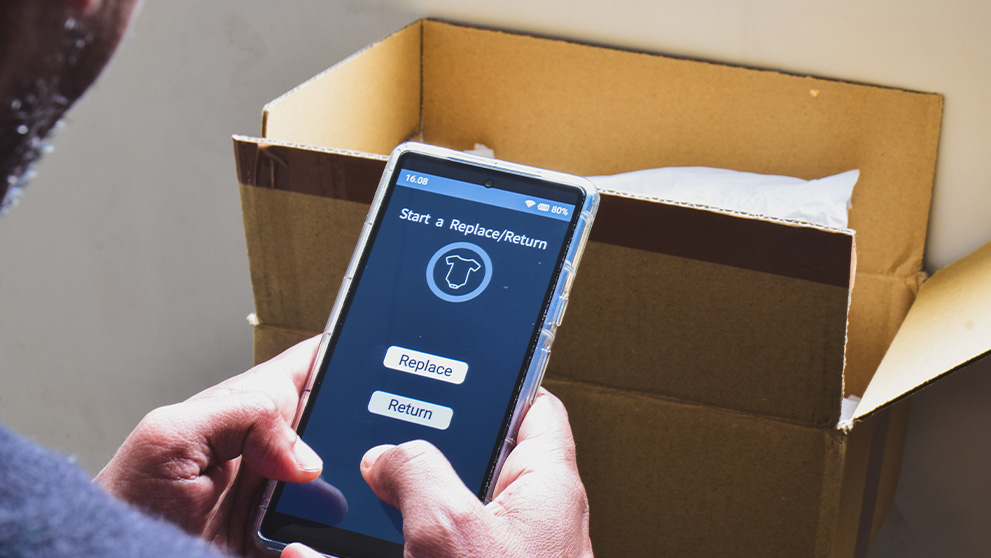You don’t need us to tell you that B2B sales and customer-centricity go hand in hand. But as the sector digitises, and face-to-face interactions reduce, B2B businesses should tap into customer feedback to ensure they stay closely engaged with their community’s needs.
Why is customer feedback so important in B2B sales?
As the saying goes, the customer is always right. Whether that is entirely true is debatable, but what is true is that they are an invaluable source of opinions which you can use to improve your products or services.
Leveraging customer feedback will bring several benefits to your business:

Improves customer relationships
Feedback helps businesses understand clients’ needs, pain points, and expectations. By actively seeking and responding to feedback, you can build trust and long-term partnerships with your customers.

Drives product/service innovation
What is working with your current offering? And more importantly, what isn’t? By listening to your customers, you can make improvements or even develop new solutions tailored to their evolving needs.

Boosts B2B customer retention and loyalty
Satisfied customers are more likely to stay loyal and recommend your business. Collecting feedback allows you to identify areas for improvement before they become bigger issues, ensuring your customers don’t look to your competitors.

Enables personalisation
In B2B sales, personalisation is the secret ingredient for success. Customer feedback helps you understand individual client preferences, allowing you to offer more tailored solutions that truly resonate.

Enhances sales and marketing strategies
Feedback can reveal trends, preferences, and challenges in the market. This information helps refine sales tactics, messaging, and marketing campaigns, making them more relevant to your audience.

Increases operational efficiency
Feedback often highlights inefficiencies in processes or product issues. Addressing these can lead to smoother operations, cost savings, and a better overall B2B customer experience.
80% of B2B sales will be made online by the end of 20251. Customer feedback will help you optimise your digital offering to match your face-to-face interactions.
Strategies for leveraging B2B customer feedback
Customer feedback is an invaluable asset for your business – and it’s often free! You just need to know the best ways to find and use it. These steps will guide you.
1. Create a system for collecting B2B customer feedback
- Surveys and questionnaires: Use targeted surveys to gather feedback at various stages of the customer journey. Tools like SurveyMonkey or Google Forms allow you to collect both quantitative and qualitative data.
- Interviews and focus groups: Conduct one-on-one interviews or small focus groups with key clients to dive deeper into their experiences, needs, and challenges.
- Browse online: An easy (and free!) way to source customer feedback is to check out what they’re saying about your business on review sites and your social media pages.
- Net Promoter Score (NPS): Measure customer satisfaction and loyalty with NPS surveys to understand how likely your customers are to recommend your business to others.
- Regular check-ins: Schedule routine check-ins with customers to gather feedback on both your product and their experience with your service.
2. Act on the feedback
- Respond promptly: Demonstrating that you’re listening is key. After collecting feedback, be sure to acknowledge it and communicate any changes or improvements you’re making based on their input.
- Prioritise changes: Not all feedback can be acted on immediately. Choose which customer pain points you’re going to focus on first based on business impact, cost and feasibility.
- Close the loop: Let your customers know how their feedback has been implemented. This builds trust and shows that their opinions matter.
3. Segment feedback for actionable Insights
- Customer segmentation: Group feedback based on customer size, industry, or specific needs. This will help you identify common challenges or desires specific to different customer groups. You can then create more personalised marketing and sales materials per group.
- Track trends: Look for recurring feedback themes. Are there particular pain points or desires emerging? These trends can guide your B2B sales strategy and product development.
4. Integrate feedback into B2B sales training
- Boost your sales team insights: Share feedback with your sales team(s) so they can better understand customers’ concerns and adjust their pitches accordingly.
- Take a customer-centric sales approach: Train your sales team to actively ask for feedback during conversations. Encourage them to listen carefully and personalise their responses based on customer insights.
5. Use feedback to personalise sales proposals
- Tailor solutions: Use feedback to understand your customers’ specific pain points. This will allow you to create more tailored, value-driven proposals that address their exact needs.
- Highlight key benefits: Feedback helps you identify which features or services are most important to customers, so you can emphasise these aspects during the sales process.
6. Improve the B2B customer experience continuously
- Fine tune your customer service: If customers report challenges with service response times, for example, set KPIs and targets to help you improve.
- Enhance your product or service: Regularly update your offerings based on customer feedback to stay relevant and competitive. This can include adding new features, improving existing ones, or enhancing your user interface.
86% of B2B buyers would pay more money for a better customer experience2. Listening to customer feedback will help you truly deliver.
7. Implement feedback loops into the sales process
- Automate feedback collection: Use CRM (Customer Relationship Management) tools to automate feedback collection at critical touchpoints, such as after a sale or following customer support interactions. This ensures continuous insights without overloading your team.
- Customer onboarding feedback: Gather feedback right after the onboarding process. This is a great way to understand how your customers view the initial stages of working with your company and where improvements can be made.
8. Leverage social proof and testimonials
- Customer testimonials: 92% of B2B customers consider online reviews3, so be sure to collect positive feedback and use it as testimonials in your sales and marketing materials. Authentic quotes from happy customers will help build credibility.
- Case studies: Develop case studies from successful customer experiences. Show how you’ve solved their problems or helped them achieve their business goals, backed by real feedback and results.
9. Use technology to streamline feedback management
- CRM Tools: Use Customer Relationship Management (CRM) systems to track and analyse customer feedback. CRM tools like Salesforce and HubSpot can help you consolidate customer data and feedback for deeper insights.
- AI and analytics: Leverage AI-powered tools to analyse customer sentiment and trends. This can help you uncover valuable insights more quickly, especially from large volumes of data.
10. Measure the impact of changes based on feedback
- Track improvements: After implementing changes based on customer feedback, measure the impact on customer satisfaction, retention, and sales performance. This ensures that the changes are making a real difference.
- Continuously improve: Customer feedback is an ongoing process. Regularly evaluate and refine your feedback strategy to ensure you're capturing the most relevant data and using it to drive improvements.
By following these best practices, you can turn B2B customer insights into a powerful tool for improving client satisfaction and driving business growth.
But your B2B sales strategy doesn’t end with customer feedback! DHL Discover is packed full of B2B insights to empower your business, including marketing best practices and tips to get started with guided selling. Dive in!
Open a DHL Express Business Account to enjoy fast, international B2B shipping.
1 – Gartner, 2020
2 & 3 – Market Inspector, 2024













